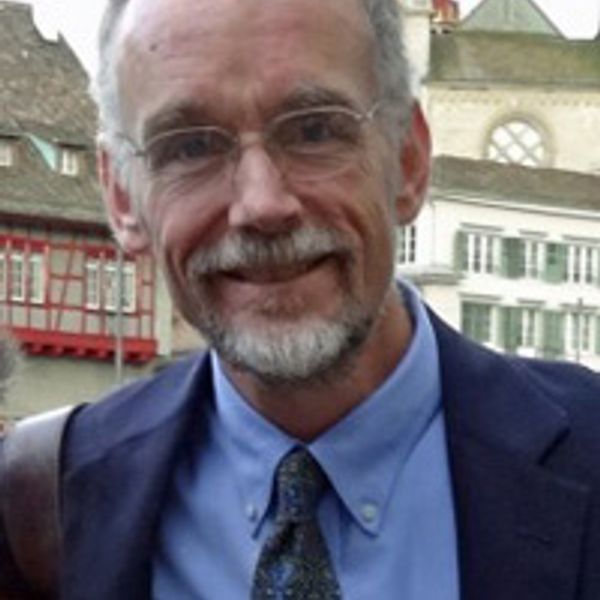Lia Purpura, Parasol Mushroom (detail), featured in AGNI 102
Mutabor: Speedlooker
It began in innocence: so does every loss.
I, Ottomar Anschütz, son of a painter,
working with my organ-building neighbor,
developed, while experimenting with cameras,
a focal-plane shutter, and for the first time
captured rapid motion. So, beginning
in 1884, I photographed storks returning
from Africa in their long periplum
to the nest’s shaggy wheel, where they laid back
their heads in the May sun, settled and flared
those wings so beautifully articulated
for pinnate flight, and each rattled its beak.
I thought to teach the birds to meet me halfway;
I thought that I had learned to bring them closer.
But I concealed from myself my desire
to overcome the uniqueness of reality
and permeate it all with my equipment.
I lost, in the equality of things,
the shelter of those proud enfolding wings,
art and nature in mutual ravishment.
And there was more. I thought the gain in detail,
the isolation in my photographs
of those necessities that rule our lives,
might somehow free us from them after all—
yet it did not. For, as in one of Atget’s
landscapes unpopulated like a crime scene,
events moved to a different conclusion,
and the aura was murdered by emptiness.
The cat’s-paw of the Prussian government
soon touched me: first the Culture Ministry,
with a grant enabling new technology—
twenty-four photographs in three-quarters of a second!—
then the War Ministry with a profitable
assignment to the riding institute manège.
My chronophotographics bested Muybridge,
unmatched in halftones and fineness of detail,
greater than Marey also, and I knew it;
yet did not know, inventing a device
not just for laboratories or photographers,
but mass-produced for instruction and entertainment,
I caused our first fall into alienation.
For a nickel in America, a penny in England,
ten pfennig in Germany, it ran for twelve seconds
and showed boxers sparring, two dancing women,
soldiers, gymnasts, a horse and rider.
It grew and grew, the fleet sensorium:
thirty-four thousand in Berlin who came
to wonder at my Electrical Wonder Company’s Schnellseher,
with even more in Chicago in ’93,
at the Strand and the Crystal Palace in London,
accessible, it seemed, to everyone,
as my machine seduced the unarmed eye
and I was famous with my pay-per-view,
a cabin or automat, and the individual
like a priest before the cult image in a temple:
I wanted that intensity somehow,
but did not realize the shock effect
of constantly-changing images would
destroy his last communion with God,
make him absentminded and distract
him, make him part of a collective,
a sea of faces laughter or terror crossed,
by which the self is only dispossessed,
never transcended. I wonder how I could have
not seen all this, tempted to overreach
with the spark of a Geissler tube, a wheel of iron,
and the Maltese cross-gear that was my invention.
I wanted pictures to keep pace with speech,
and so they did, with each ephemeral name:
Mutograph, Zoetrope, Tachyscope,
E idoloscope, Panopticon, Thaumatrope,
Vitascope or Kaiserpanorama;
and when foreboding came, it was too late.
The clatter of the storks’ beaks long ago
was that of my device. Life turned; looks sped so;
devouring change expressed itself in light;
the miracle by idols was usurped
in heroic copulation with the material world.
Nothing escaped. 42,000 marks I owed,
and my Electrical Wonder Company was bankrupt.
Notes:
Ottomar Anschütz (1846–1907) was a pioneer of photography and moving images contemporaneous with Etienne-Jules Marey and Eadweard Muybridge (both 1830–1904) and Eugène Atget (1857–1927). His meditation anticipates (and paraphrases) observations in Walter Benjamin’s “The Work of Art in the Age of Mechanical Reproduction” (1936; Harry Zohn translation), including the following:
Our taverns and our metropolitan streets, our offices and furnished rooms, our railroad stations and our factories appeared to have us locked up hopelessly. Then came the film and burst this prison-world asunder by the dynamite of the tenth of a second, so that now, in the midst of its far-flung ruins and debris, we calmly and adventurously go sailing. (p. 236)
The poem also refers to Deac Rossell, Living Pictures: The Origins of the Movies (pp. 42-3 and 45), Martin Quigley, Jr., Magic Shadows: The Story of the Origin of Motion Pictures (pp. 157-8). “Fall into alienation” and “heroic copulation” are in Susan Sontag, On Photography (p. 4, 30).

Karl Kirchwey
Karl Kirchwey is the author of seven books of poems, including Stumbling Blocks: Roman Poems (Northwestern University Press, 2017), Mount Lebanon (Marian Wood/Putnam, 2011), and The Happiness of This World (Putnam, 2007). His translation of Paul Verlaine’s first book of poems is Poems Under Saturn (Princeton University Press, 2011). He has also edited an anthology of poems about Rome for the Everyman’s Library Pocket Poets Series and has recently translated work by Italian poets Giorgio Vigolo (1894—983) and Giovanni Giudici (1924—2011). He is professor of English and creative writing at Boston University. (updated 10/2022)
